Best Uninterruptible Power Supplies to Buy in December 2025
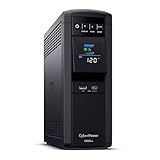
CyberPower CP1500PFCLCD PFC Sinewave UPS Battery Backup and Surge Protector, 1500VA/1000W, 12 Outlets, AVR, Mini Tower; UL Certified
-
POWERFUL 1500VA UPS: SAFEGUARDS ALL CRITICAL ELECTRONICS SEAMLESSLY.
-
VERSATILE OUTLETS: 12 NEMA PORTS FOR BATTERY BACKUP AND SURGE PROTECTION.
-
COLOR LCD PANEL: REAL-TIME ALERTS TO PREVENT DOWNTIME AND ISSUES.


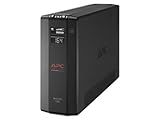
APC Back-UPS Pro 1500VA UPS Battery Backup & Surge Protector, BX1500M Backup Battery Power Supply
- SUPPORT MULTIPLE DEVICES: 10 OUTLETS FOR BATTERY BACKUP & SURGE PROTECTION.
- AUTOMATIC VOLTAGE REGULATION: INSTANTLY CORRECTS VOLTAGE FLUCTUATIONS.
- ENERGY-STAR CERTIFIED: ECO-FRIENDLY DESIGN WITH REPLACEABLE BATTERY OPTION.


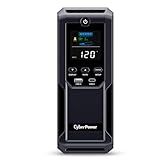
CyberPower CP1500AVRLCD3 Intelligent LCD UPS System, 1500VA/900W, 12 Outlets, 2 USB Ports, AVR, Mini Tower, Black
- 12 OUTLETS FOR MAXIMUM PROTECTION: 6 BACKUP & 6 SURGE PROTECTED PORTS.
- COLOR LCD PANEL: GET REAL-TIME BATTERY INFO TO PREVENT DOWNTIMES.
- 3-YEAR WARRANTY INCLUDED: COVERAGE FOR BOTH UPS AND BATTERY EXTENDS TRUST.


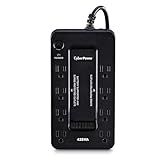
CyberPower ST425 Standby UPS Battery Backup and Surge Protector, 425VA/260W, 8 Outlets, Compact, UL Certified
-
SIMULATED SINE WAVE PROTECTS PCS, CONSOLES, AND ROUTERS EFFECTIVELY.
-
8 OUTLETS: 4 WITH BATTERY BACKUP & SURGE PROTECTION FOR VERSATILITY.
-
HIGH-EFFICIENCY DESIGN CUTS POWER USAGE, SAVING YOU MONEY.


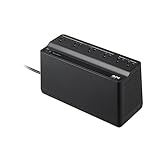
APC UPS Battery Backup Surge Protector, 425VA Backup Battery Power Supply, BE425M, Black
- RELIABLE 425VA BACKUP FOR WIFI & SMALL ELECTRONICS
- 6 OUTLETS: 4 WITH UPS, 2 SURGE-ONLY PROTECTION
- 3-YEAR WARRANTY & $75K EQUIPMENT PROTECTION INCLUDED


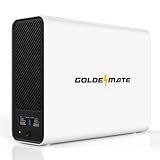
GOLDENMATE 1000VA/800W Lithium UPS Battery Backup and Surge Protector, Backup Battery Power Supply with LiFePO4 Batteries(230.4 Wh), Sinewave UPS System, 10 Years Lifespan, 8 Outlets, LCD Display
-
10+ YEAR LIFESPAN & 5000+ CHARGE CYCLES: SAVE MONEY LONG-TERM!
-
8 OUTLETS WITH SURGE PROTECTION: POWER MULTIPLE DEVICES SECURELY.
-
REAL-TIME MONITORING: STAY INFORMED WITH THE INTELLIGENT LCD PANEL.


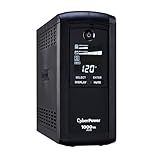
CyberPower CP1000AVRLCD Intelligent LCD UPS Battery Backup and Surge Protector, 1000VA/600W, 9 Outlets, AVR, Mini-Tower, UL Certified
-
NINE OUTLETS: MAXIMIZE DEVICE PROTECTION WITH 5 BACKUP & 4 SURGE.
-
REAL-TIME LCD DISPLAY: MONITOR BATTERY LIFE AND LOAD CAPACITY EASILY.
-
3-YEAR WARRANTY: PEACE OF MIND WITH EXTENSIVE COVERAGE & GUARANTEES.


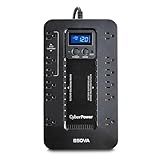
CyberPower EC850LCD Ecologic UPS Battery Backup and Surge Protector, 850VA/510W, 12 Outlets, ECO Mode, Compact, UL Certified
- SAFEGUARD VITAL DEVICES WITH 850VA/510W ECO-FRIENDLY UPS POWER.
- 12 VERSATILE OUTLETS PROVIDE OPTIMAL BATTERY BACKUP & SURGE PROTECTION.
- SAVE ENERGY AND COSTS WITH AUTOMATIC ECO MODE FOR PERIPHERALS.


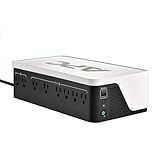
APC UPS Battery Backup, 1050VA UPS with 6 Backup Battery Outlets, Type C USB Charging, BE1050G3 Back-UPS
-
8 OUTLETS FOR POWER BACKUP & SURGE PROTECTION: STAY CONNECTED!
-
DUAL USB PORTS: CHARGE DEVICES EASILY & EFFICIENTLY!
-
USER-FRIENDLY REPLACEABLE BATTERY: HASSLE-FREE MAINTENANCE!


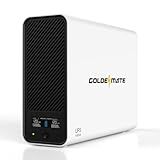
GOLDENMATE 1000VA/600W Lithium UPS Battery Backup and Surge Protector, Backup Battery Power Supply with LiFePO4 Batteries(153.6 Wh), Sinewave UPS System, 10 Years Lifespan, 8-Outlets, LCD Display
-
10+ YEAR LIFESPAN: SAVE 40% ON OWNERSHIP COSTS WITH DURABLE LIFEPO4 BATTERY.
-
VERSATILE CONNECTIVITY: EIGHT OUTLETS & SMART COOLING FOR RELIABLE PERFORMANCE.
-
REAL-TIME MONITORING: LCD PANEL KEEPS YOU INFORMED FOR OPTIMAL DEVICE USAGE.


In a world that increasingly relies on technology, securing an uninterruptible power supply (UPS) is essential for protecting your devices and data. This article breaks down the essentials of choosing the right UPS to ensure that you're prepared for unexpected power outages.
Understanding Uninterruptible Power Supplies
An uninterruptible power supply is a device that provides emergency power to your electronics when the main power source fails. It serves as a battery backup, supplying critical electricity for a limited period, allowing you to save work and safely shut down your devices.
Key Components of a UPS
A typical UPS consists of three main components:
- Battery: Stores energy to provide power during outages.
- Inverter: Converts battery power from direct current (DC) to alternating current (AC) used by most electronics.
- Transfer Switch: Switches the power source to battery backup when an outage is detected.
How to Choose the Right UPS
When looking for the best uninterruptible power supply deals, consider the following factors:
1. Capacity and Load
The UPS capacity, measured in volt-amperes (VA), determines how much power it can supply. Calculate the total power consumption of your devices to ensure the UPS can support the load.
2. Runtime
Consider how long you need the UPS to power your devices during an outage. Higher capacity typically means longer runtime, giving you ample time to save work and shut down.
3. Features
Look for advanced features like:
- Surge Protection: Shields against power surges and spikes.
- Automatic Voltage Regulation (AVR): Maintains a consistent voltage level.
- LCD Display: Provides real-time notifications of power status and remaining runtime.
4. Form Factor and Outlets
Select a UPS that fits your space constraints and has enough outlets to accommodate all your devices. Both tower and rack-mounted designs are available, with varying numbers of outlets.
5. Budget
Determine your budget and compare different models to find the best value. Additionally, explore related topics to broaden your understanding of power supplies and charging options. For those interested in affordable USB-C charger options or affordable home electric car chargers, these guides can complement your search for power solutions.
Why Invest in a UPS?
Investing in a UPS can save you from data loss, protect your hardware, and minimize downtime. It's an essential component for anyone relying on continuous device usage, whether at home or in an office environment.
Conclusion
Choosing the right uninterruptible power supply involves understanding your power requirements, desired runtime, and budget. Armed with this knowledge, you can explore the market with confidence, ensuring that you find the best UPS deals tailored to your needs.
